Abstract
1. Rotation of an object about its horizontal axis, towards or away from the viewer's eyes, usually causes the images of its contours to have slightly different orientations on the two retinae.
2. We recorded action potentials from binocular neurones in the cat's visual cortex and measured their orientation-selectivity carefully in both eyes.
3. The optimal orientation for a single cell is not necessarily identical on both retinae. For a large sample of cells there is a range of more than + 15° (S.D. about 6-9°) in the difference of preferred orientation in the two eyes. These interocular differences in receptive field properties cannot be attributed to rotation of the eyes or to the errors of measurement.
4. During simultaneous binocular stimulation the images must not only lie in the correct place on both retinae but also have exactly the right orientation for both receptive fields in order to elicit the maximum response from a neurone.
5. Therefore certain binocular cells respond specifically to objects tilted in three-dimensional space towards the cat, or away from it.
Full text
PDF
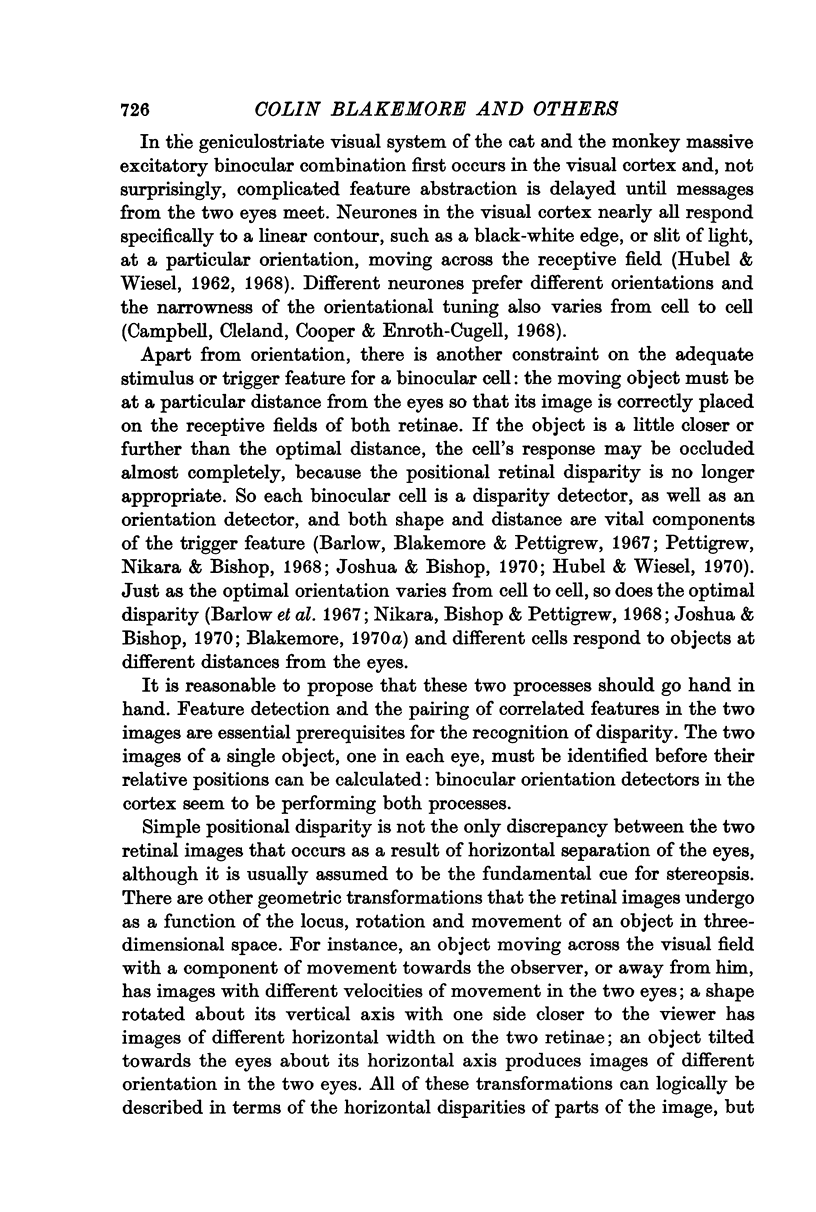
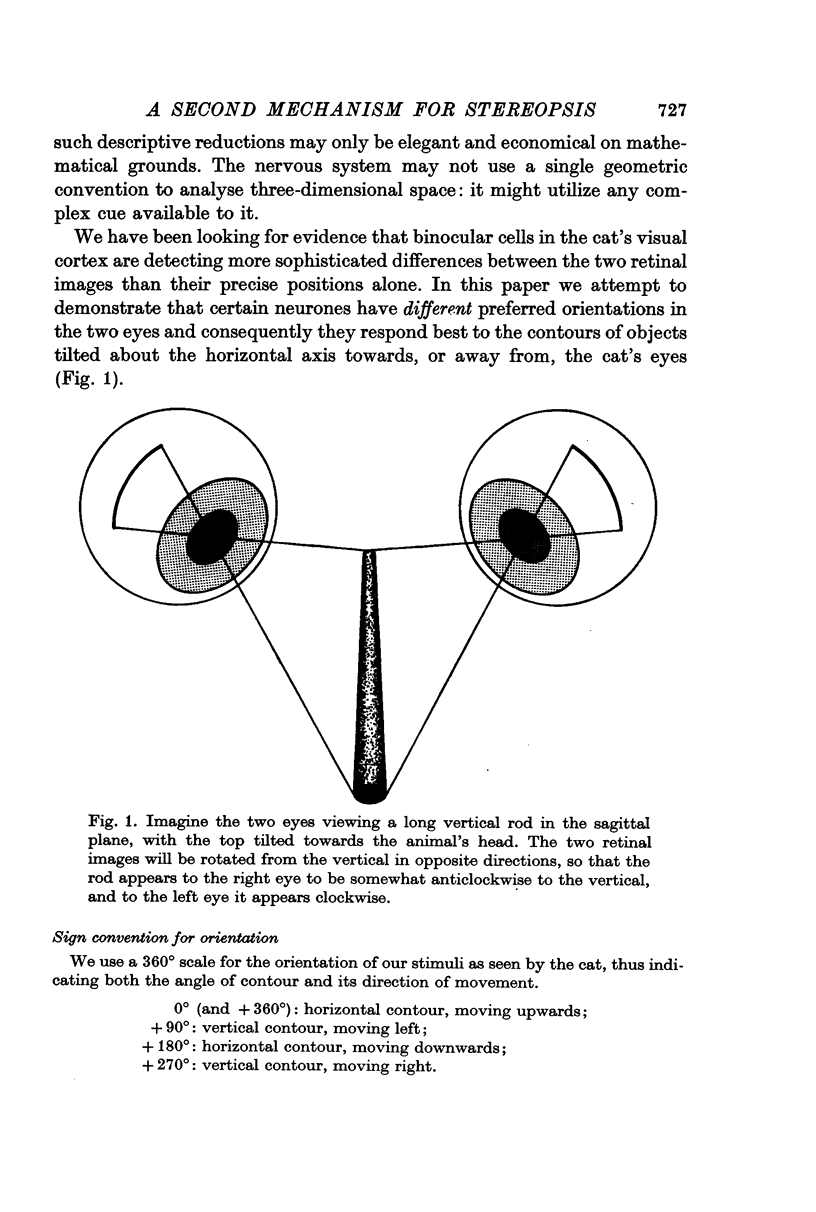

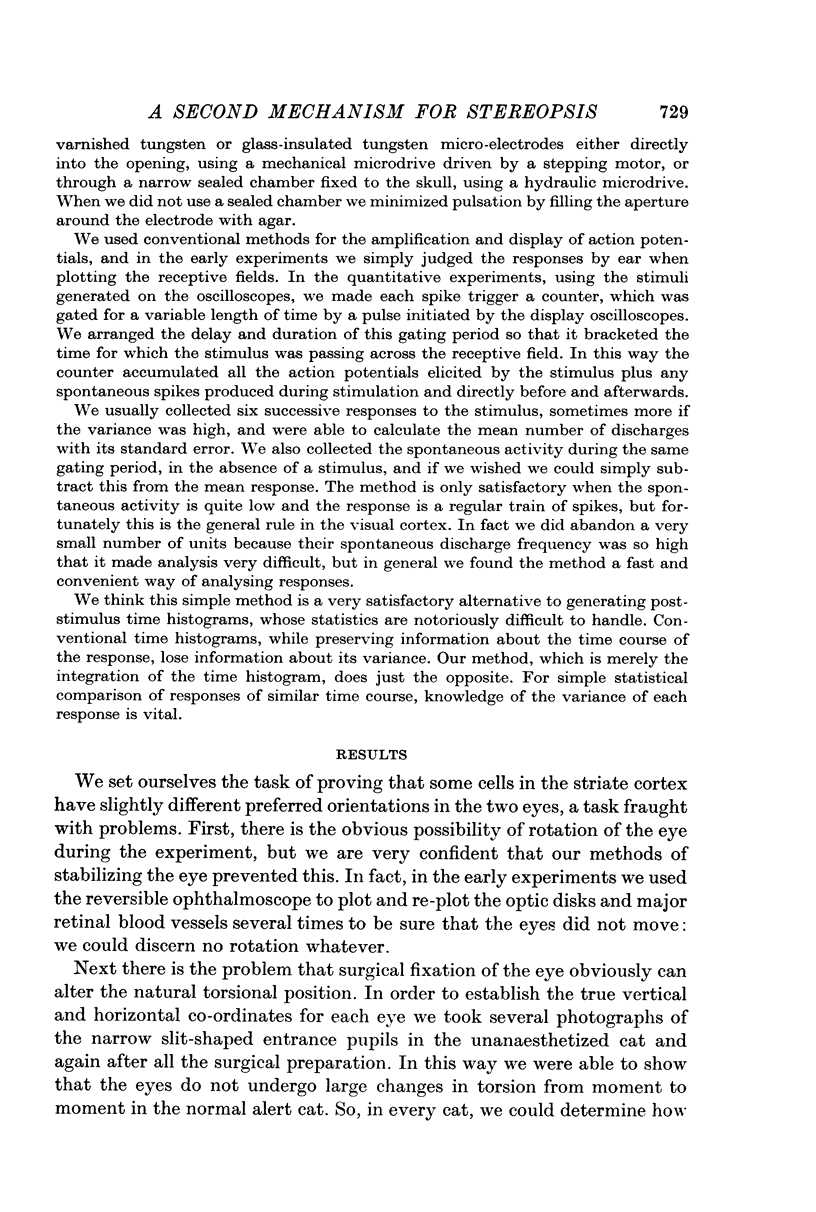

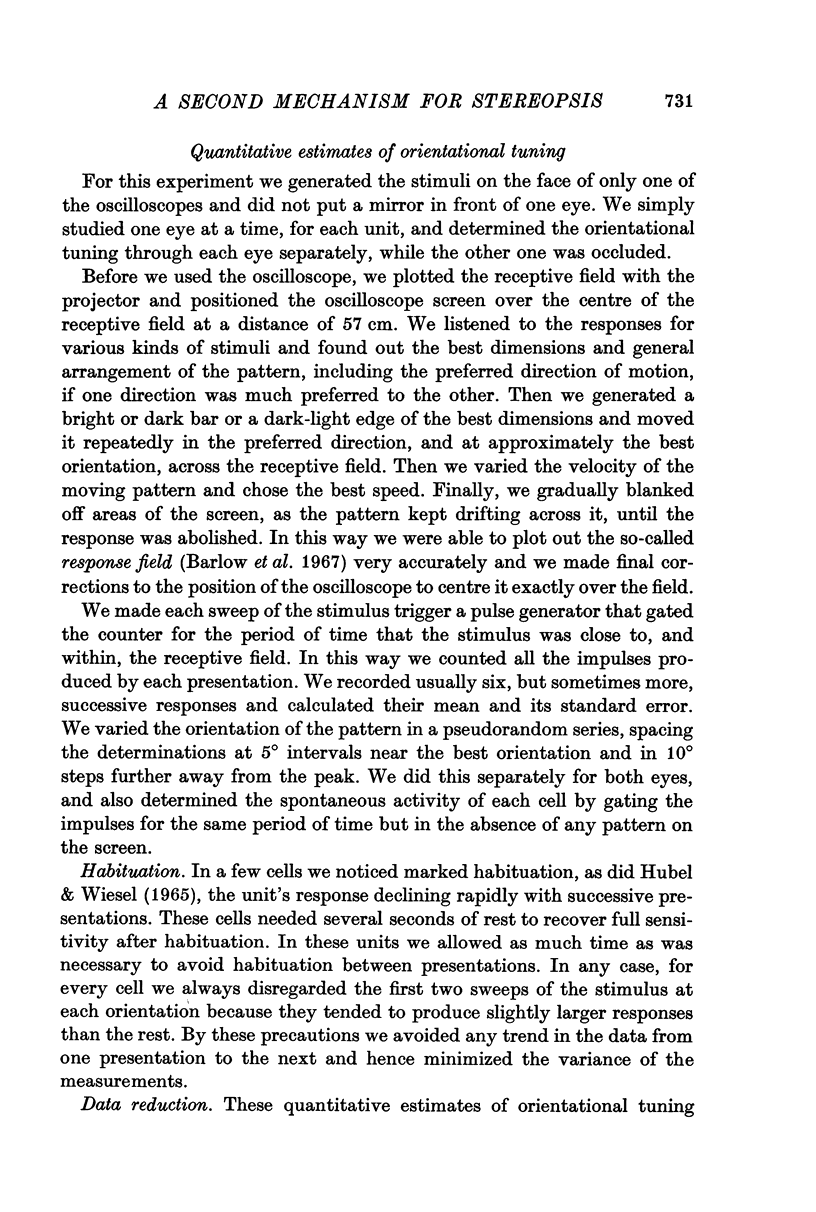
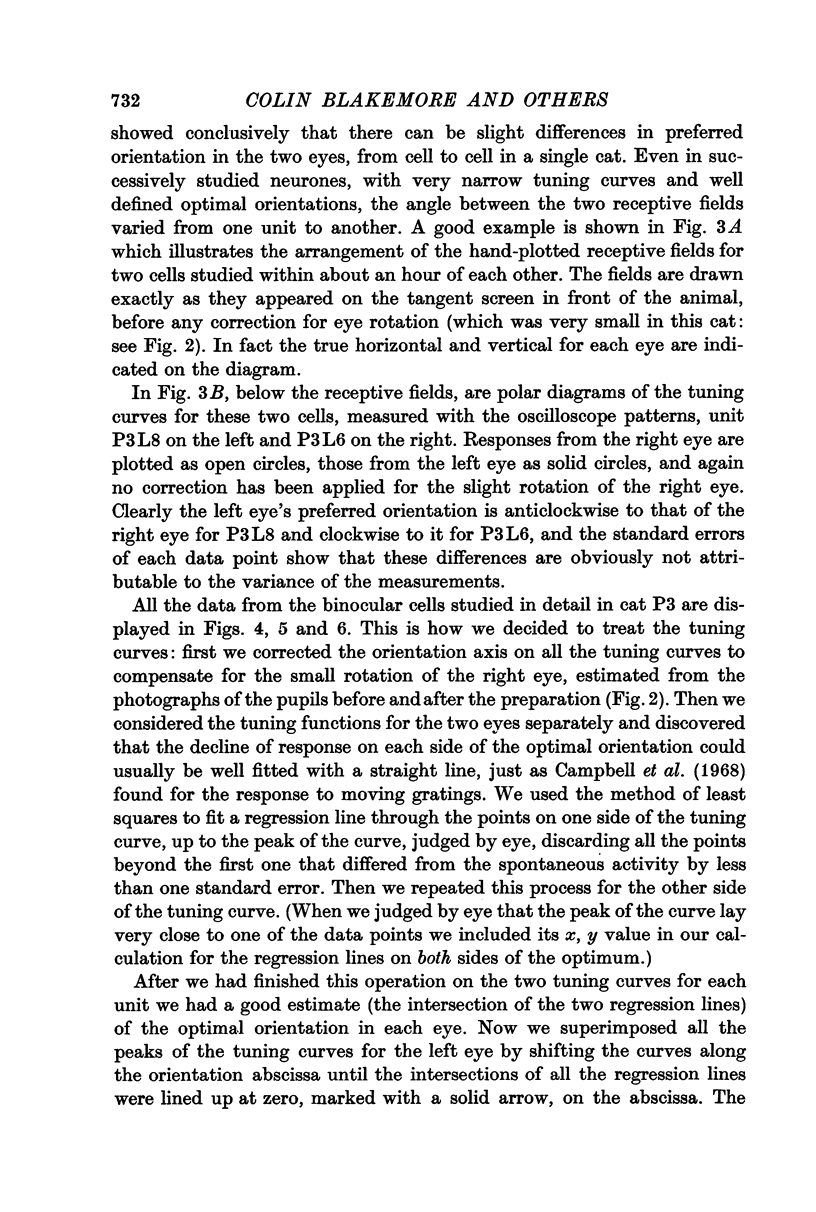
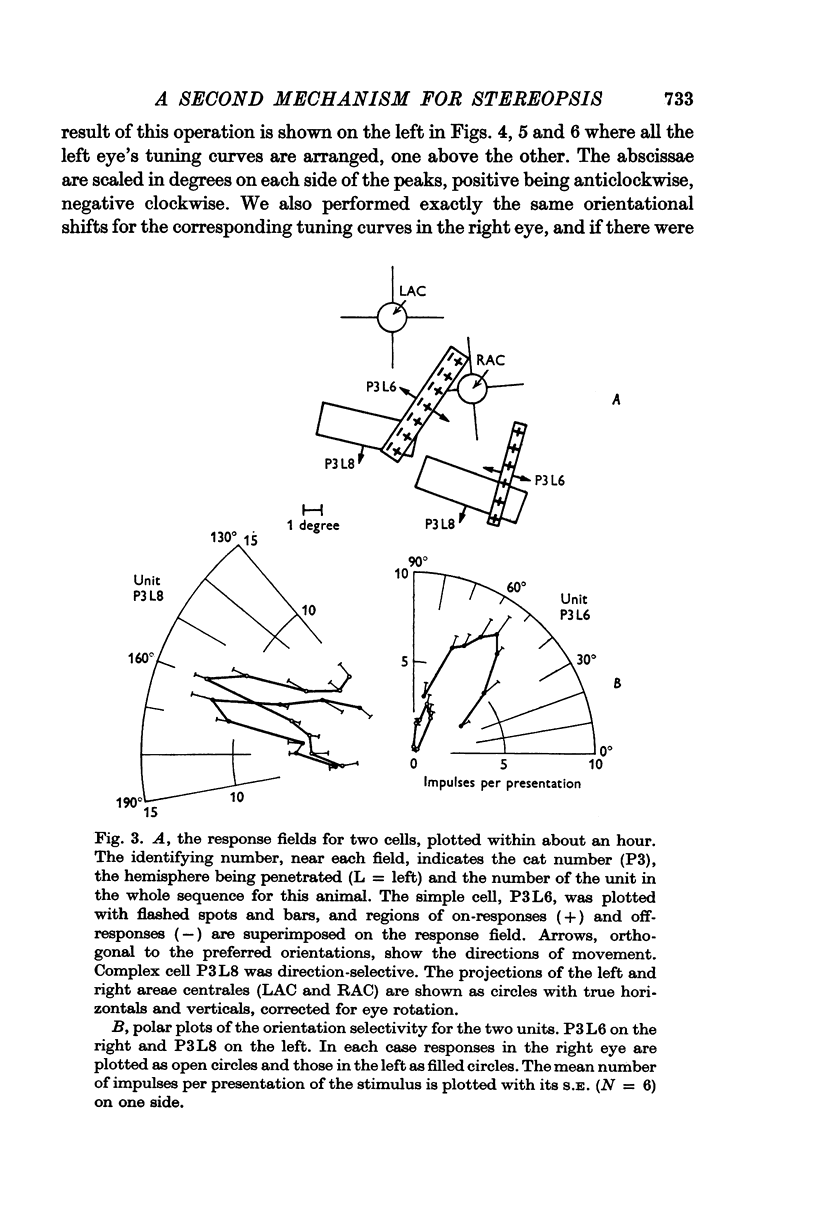
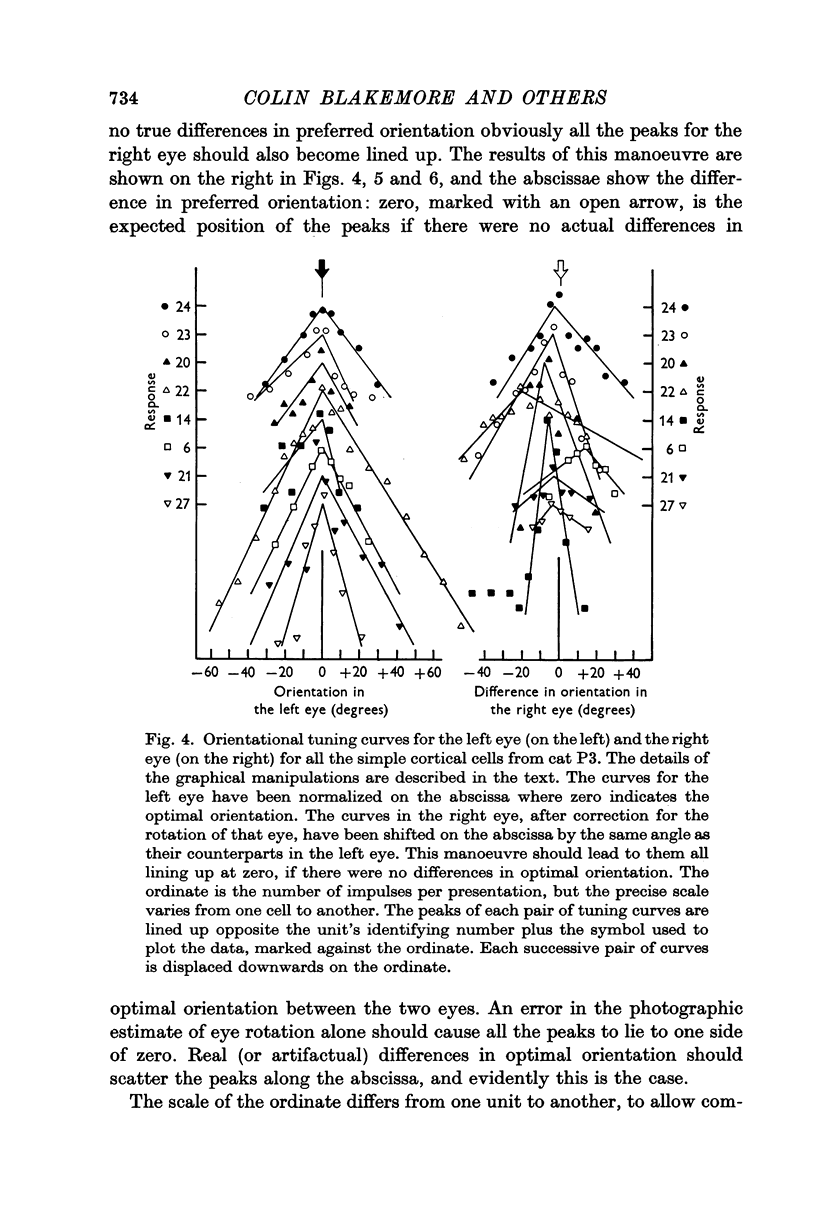
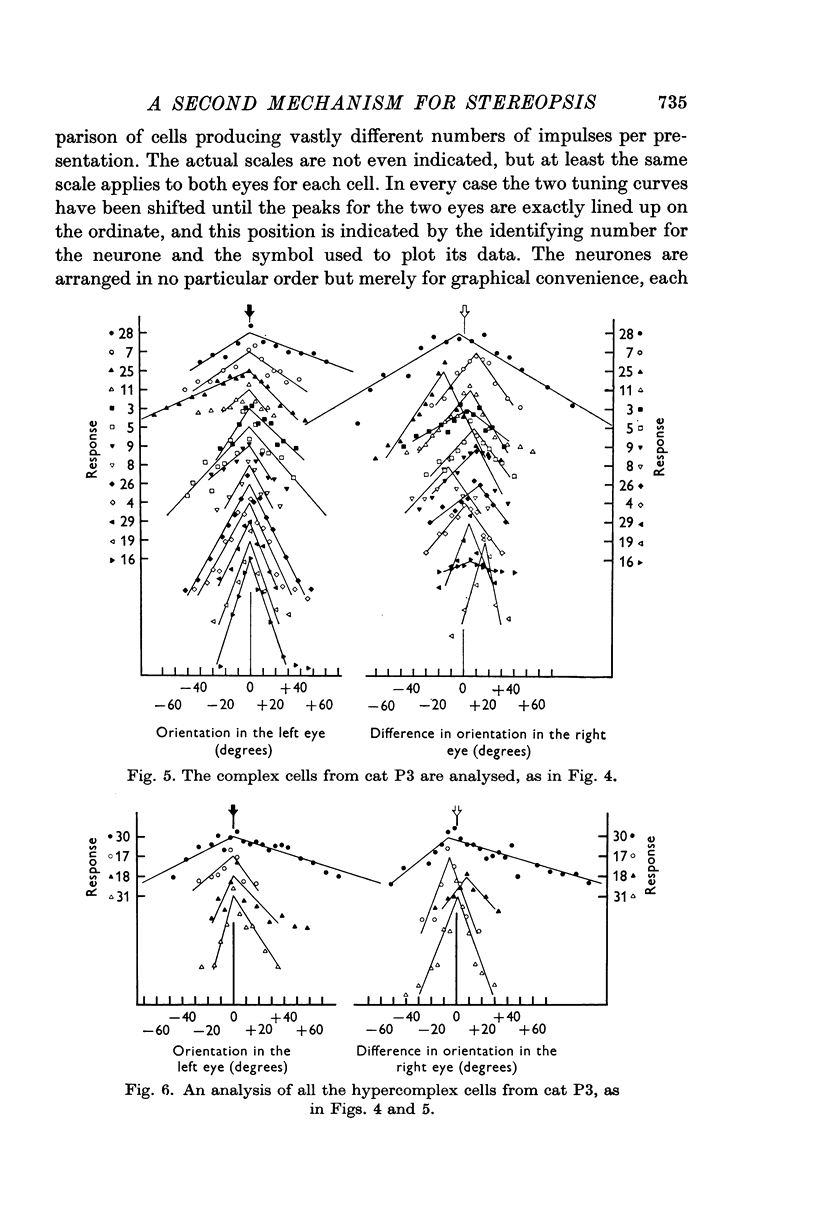
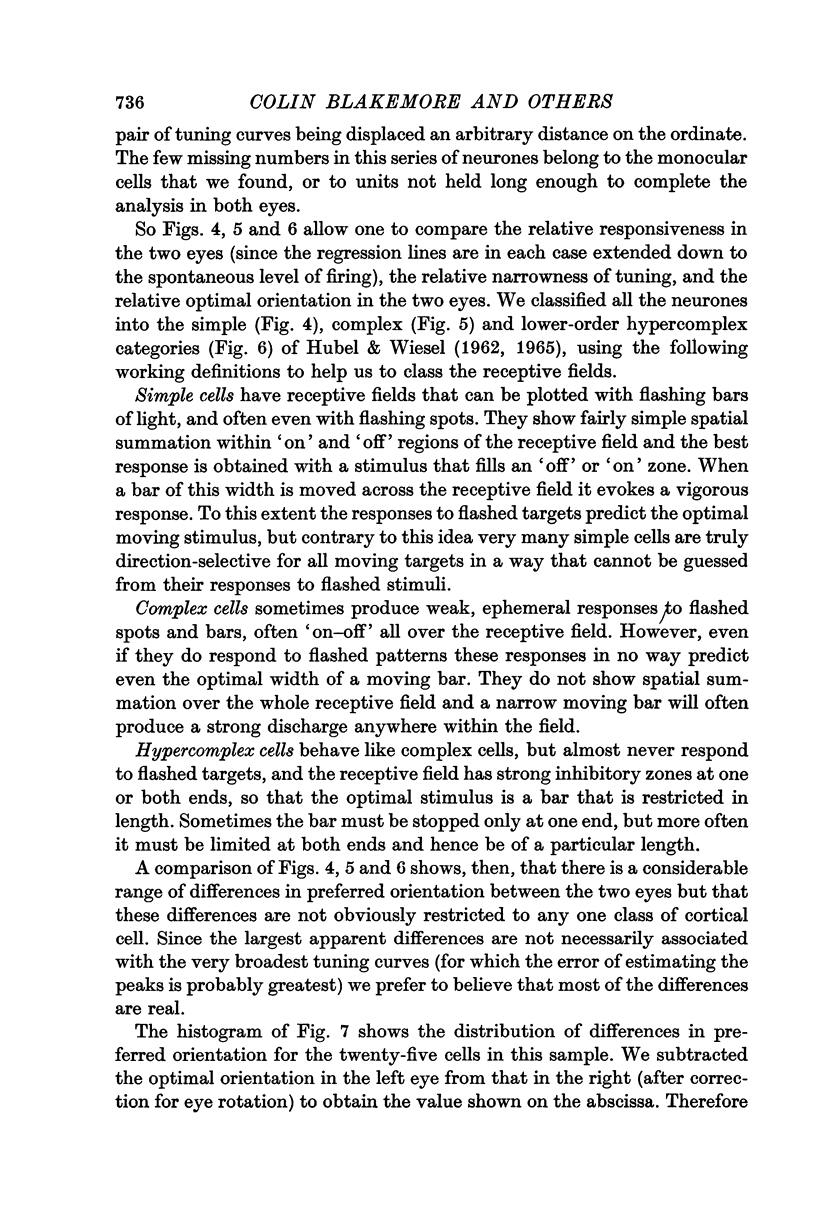

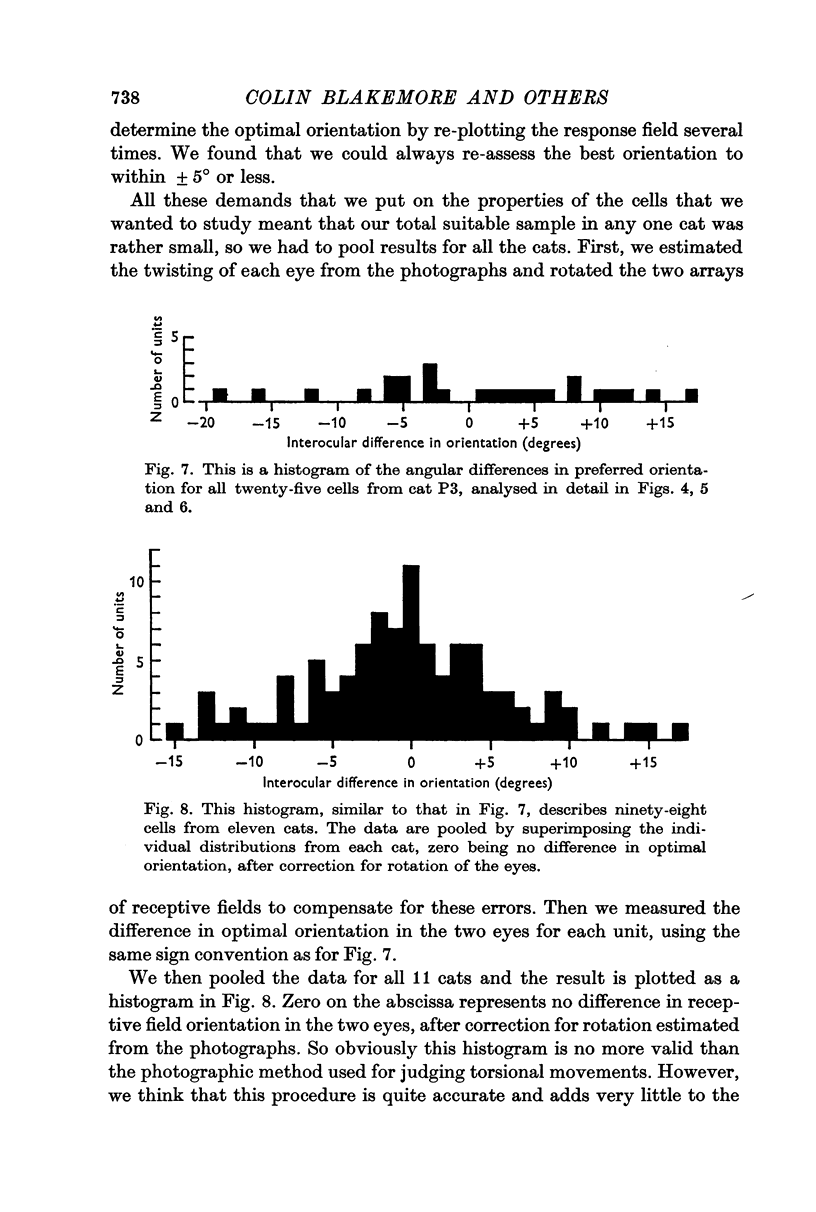
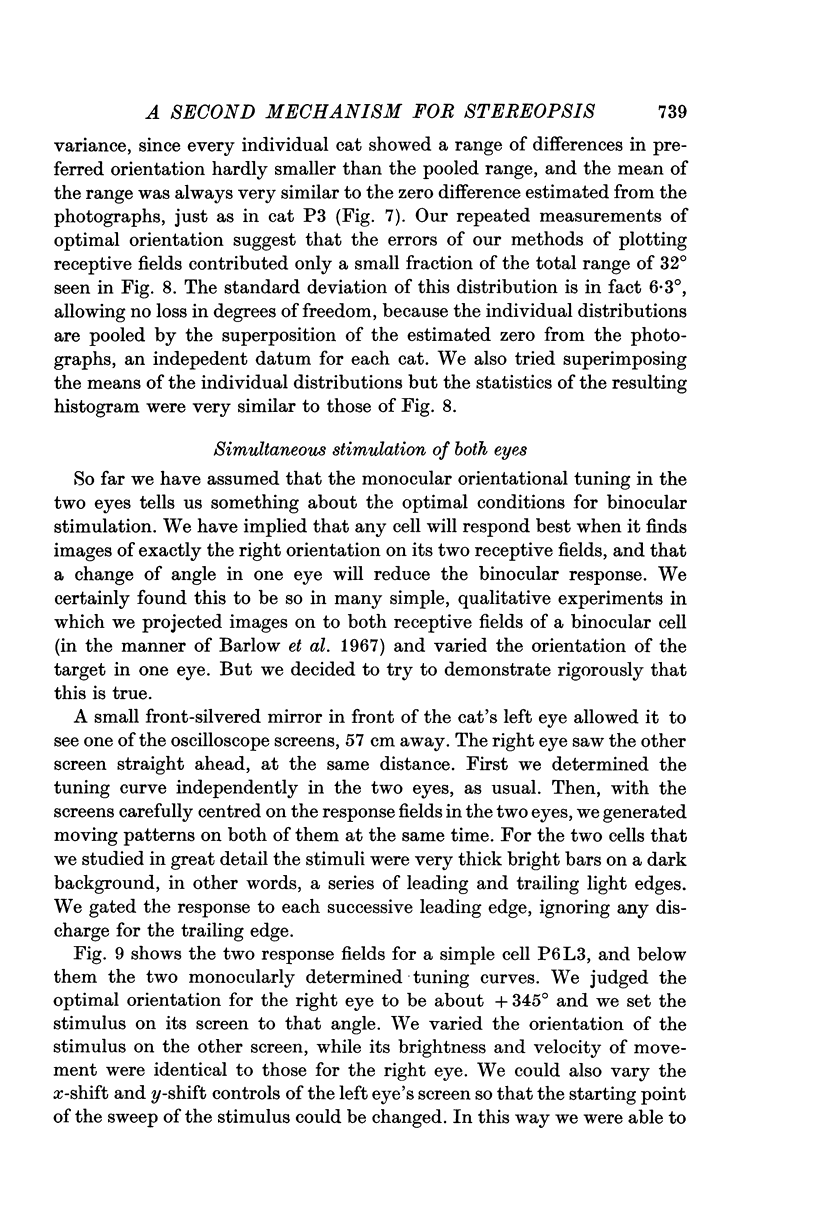
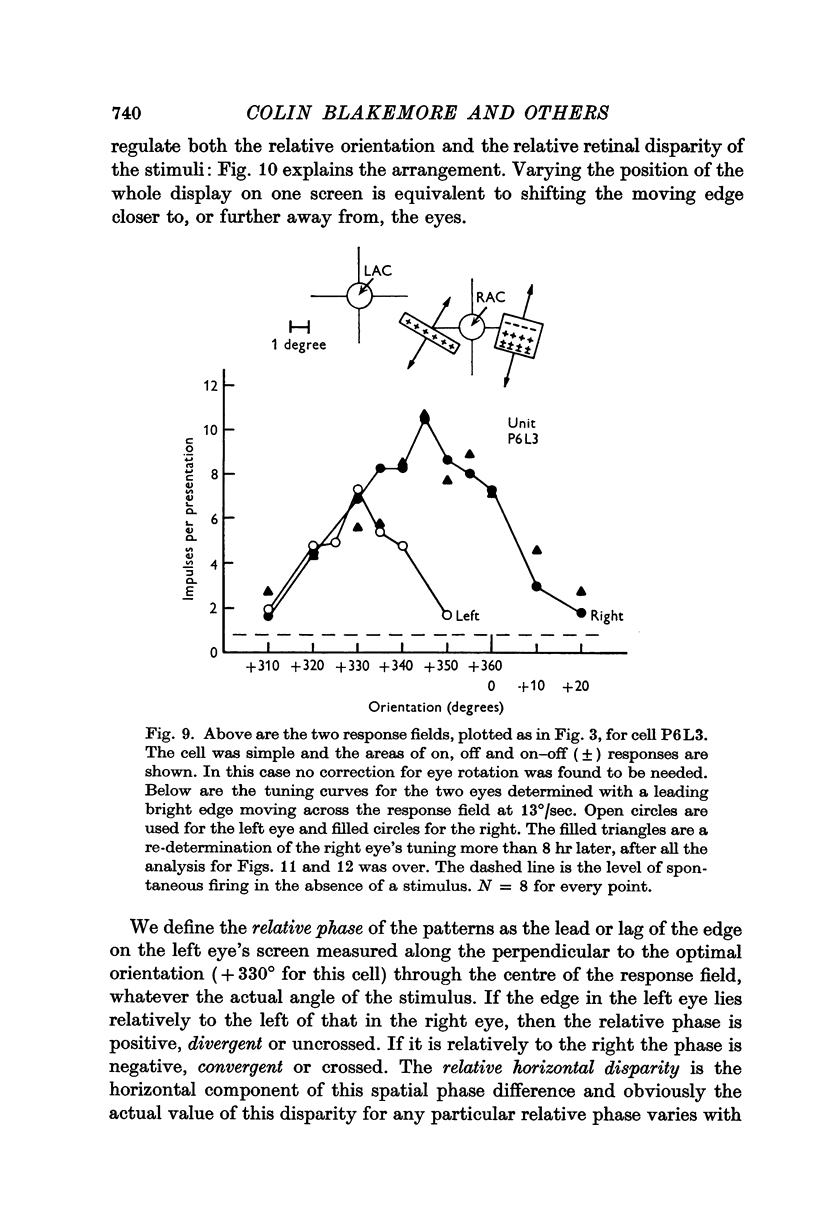
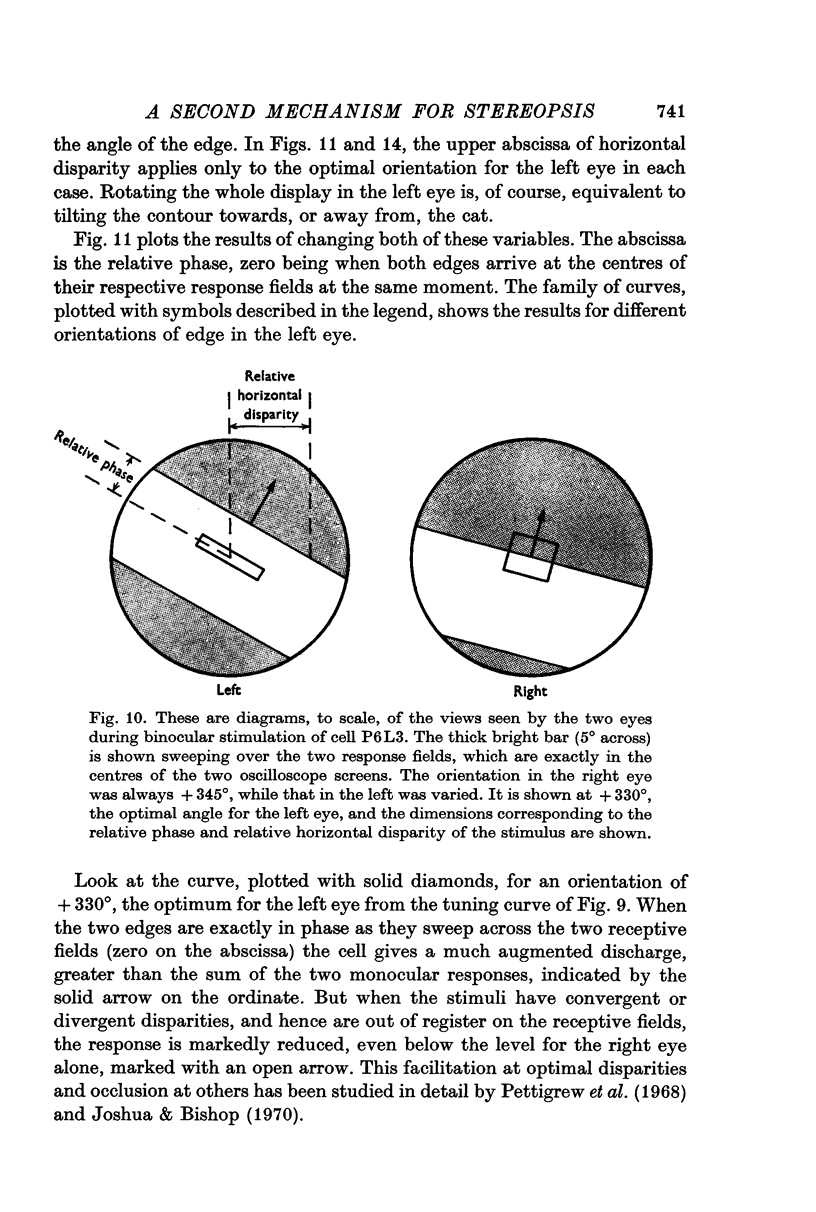
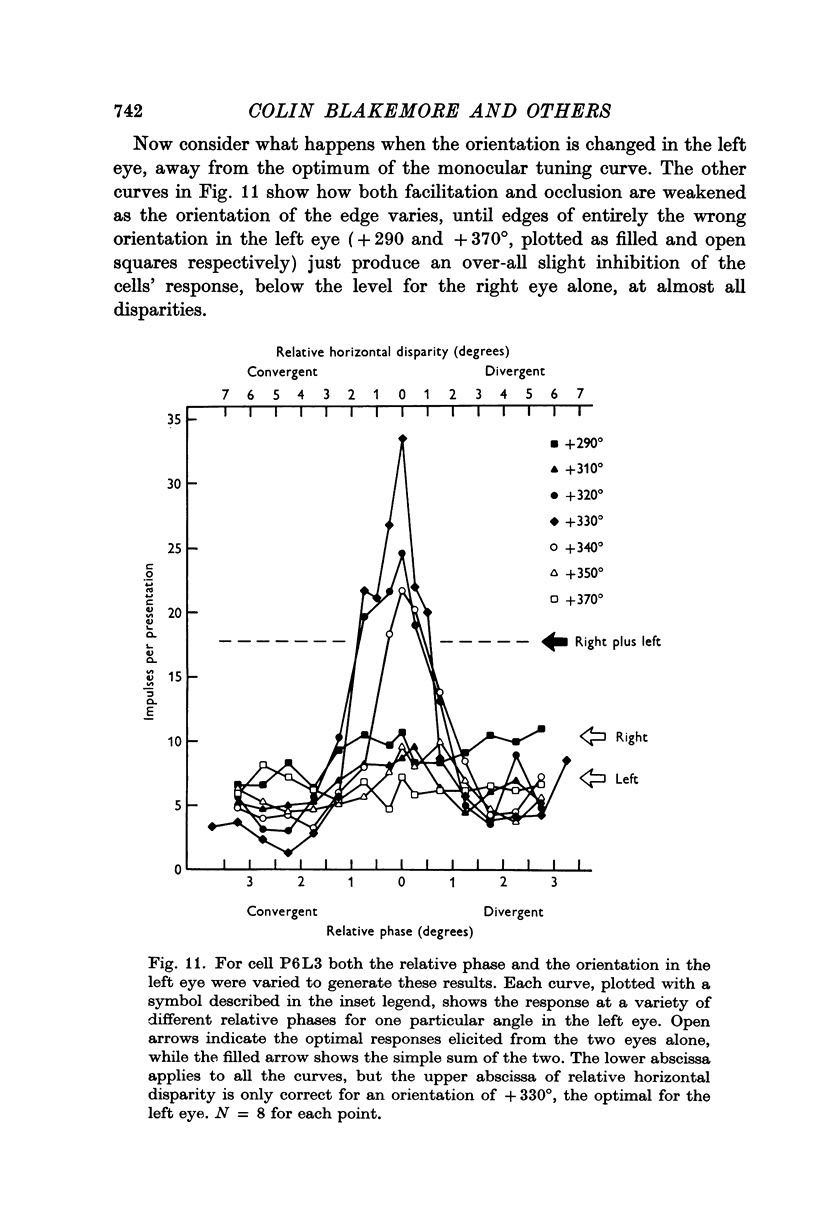
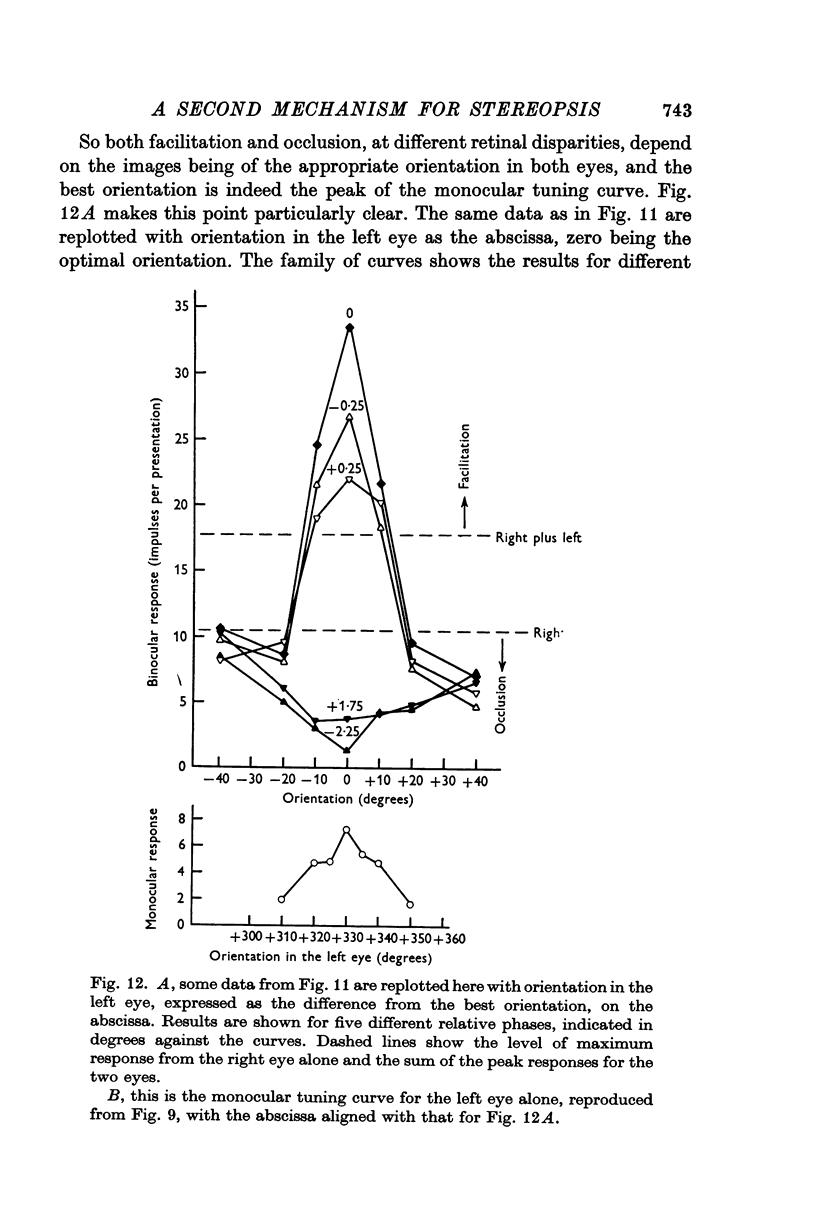
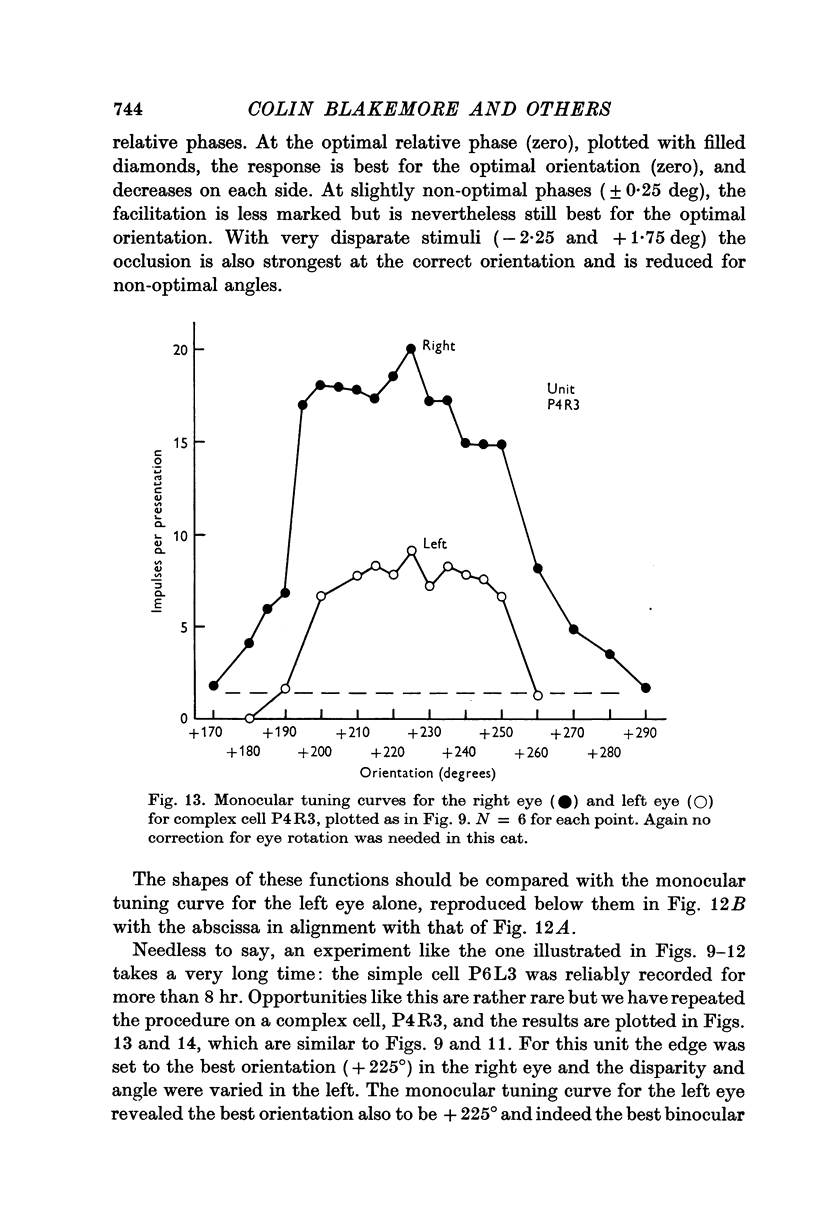
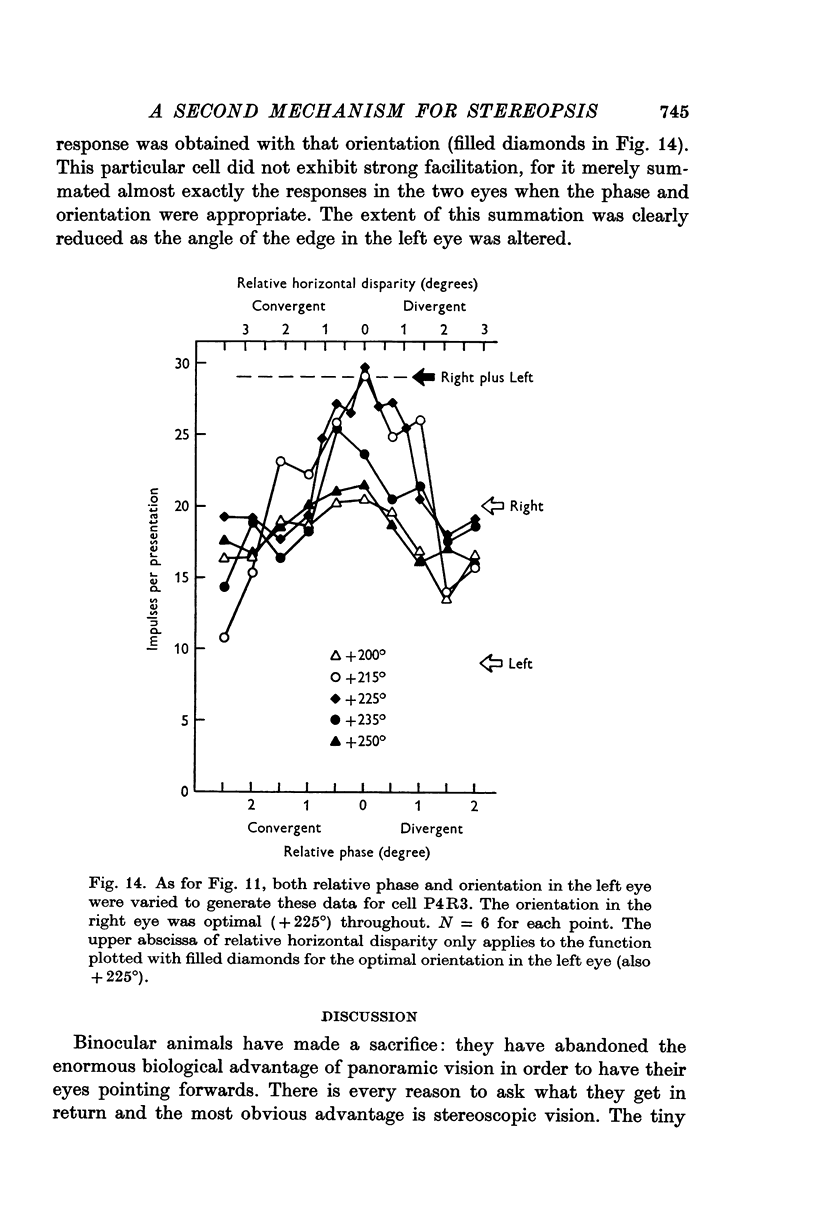
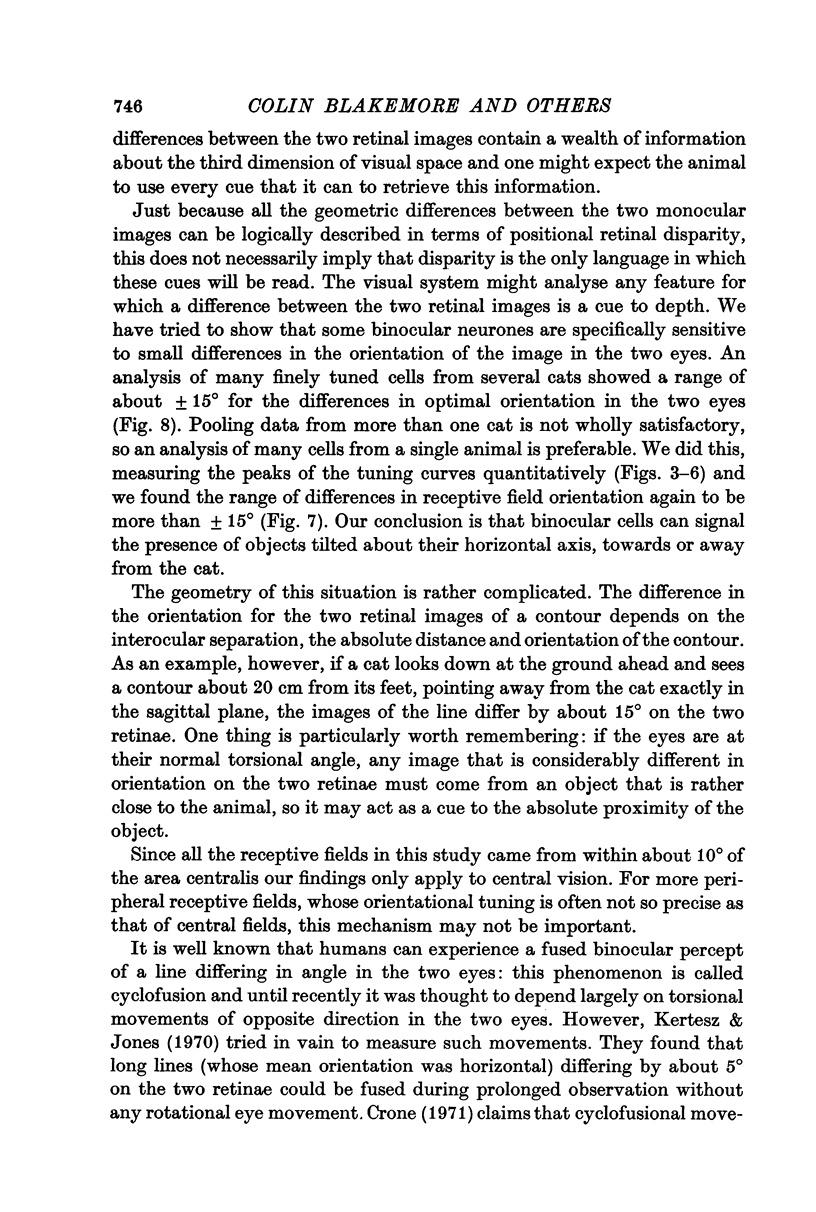
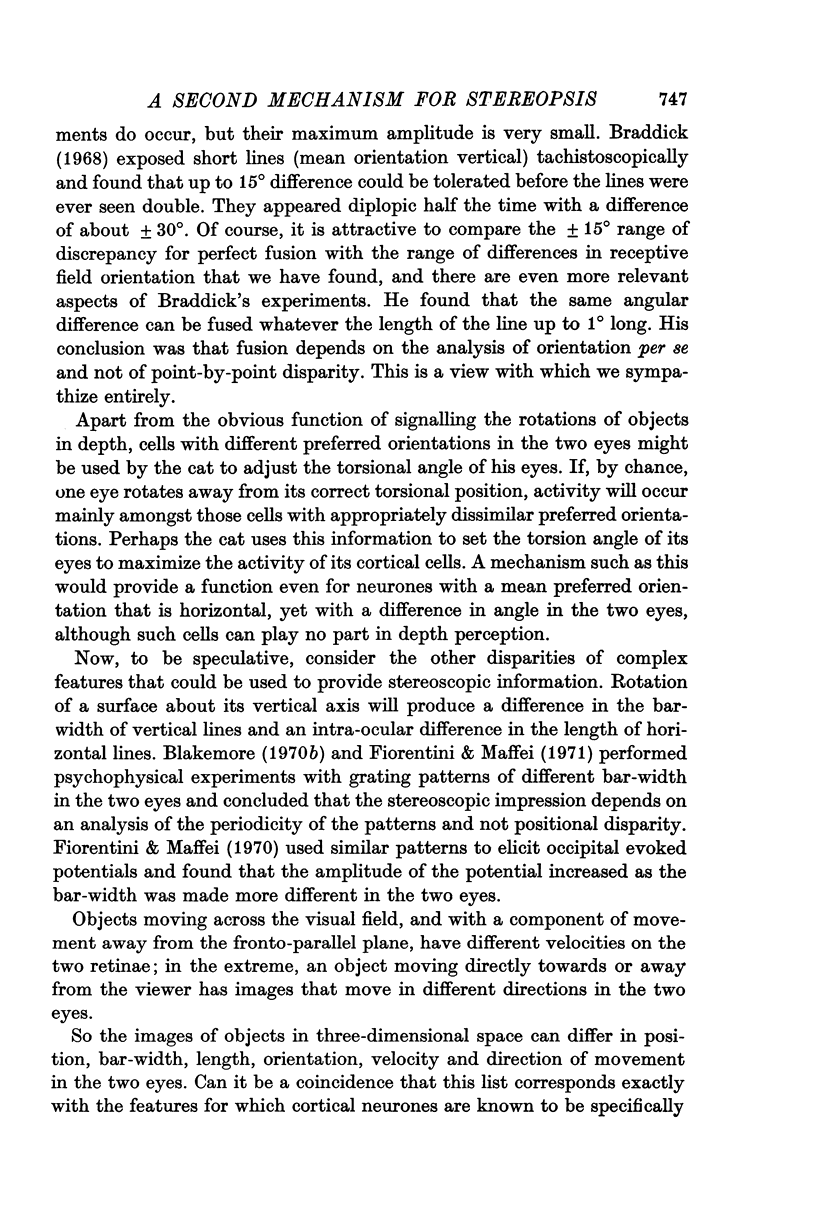
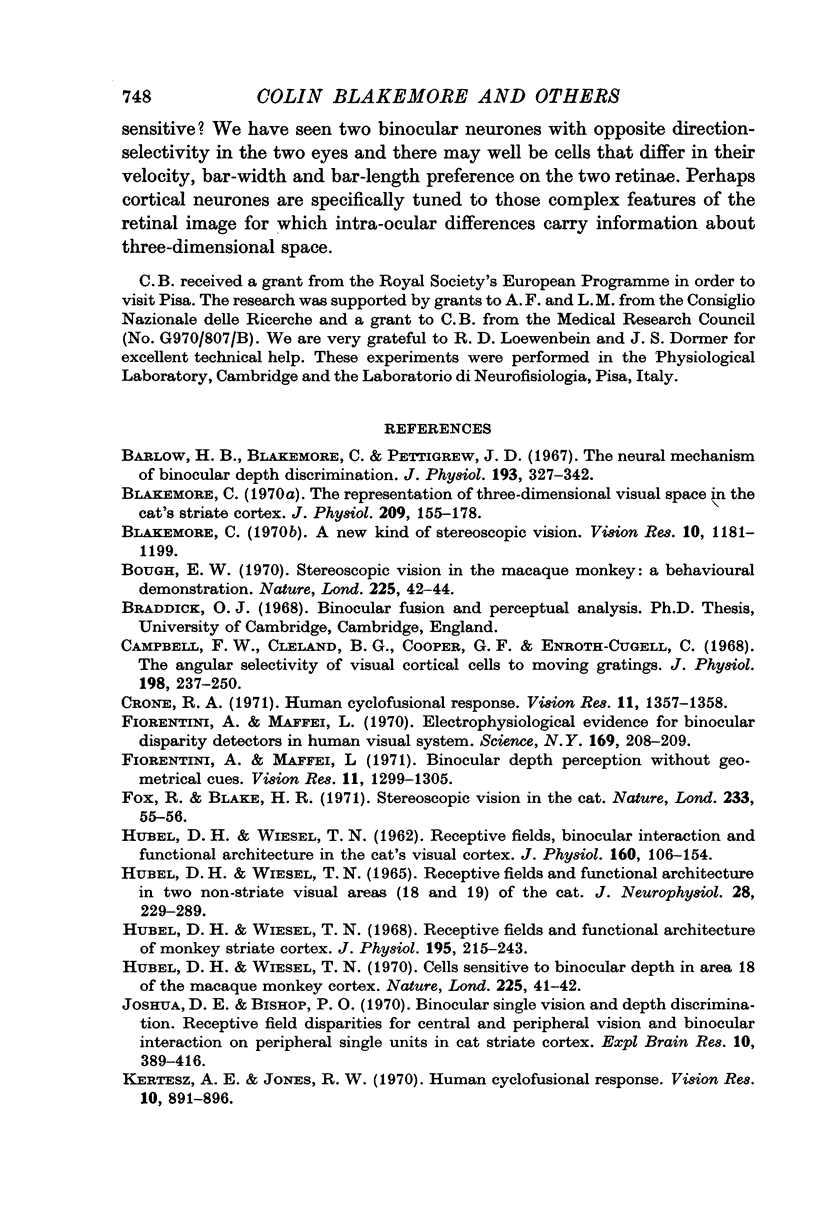

Selected References
These references are in PubMed. This may not be the complete list of references from this article.
- Barlow H. B., Blakemore C., Pettigrew J. D. The neural mechanism of binocular depth discrimination. J Physiol. 1967 Nov;193(2):327–342. doi: 10.1113/jphysiol.1967.sp008360. [DOI] [PMC free article] [PubMed] [Google Scholar]
- Blakemore C. A new kind of stereoscopic vision. Vision Res. 1970 Nov;10(11):1181–1199. doi: 10.1016/0042-6989(70)90036-2. [DOI] [PubMed] [Google Scholar]
- Blakemore C. The representation of three-dimensional visual space in the cat's striate cortex. J Physiol. 1970 Jul;209(1):155–178. doi: 10.1113/jphysiol.1970.sp009160. [DOI] [PMC free article] [PubMed] [Google Scholar]
- Bough E. W. Stereoscopic vision in the macaque monkey: a behavioural demonstration. Nature. 1970 Jan 3;225(5227):42–44. doi: 10.1038/225042a0. [DOI] [PubMed] [Google Scholar]
- Campbell F. W., Cleland B. G., Cooper G. F., Enroth-Cugell C. The angular selectivity of visual cortical cells to moving gratings. J Physiol. 1968 Sep;198(1):237–250. doi: 10.1113/jphysiol.1968.sp008604. [DOI] [PMC free article] [PubMed] [Google Scholar]
- Crone R. A. Human cyclofusional response. Vision Res. 1971 Nov;11(11):1357–1358. doi: 10.1016/0042-6989(71)90018-6. [DOI] [PubMed] [Google Scholar]
- Fiorentini A., Maffei L. Binocular depth perception without geometrical cues. Vision Res. 1971 Nov;11(11):1299–1305. doi: 10.1016/0042-6989(71)90012-5. [DOI] [PubMed] [Google Scholar]
- Fiorentini A., Maffei L. Electrophysiological evidence for binocular disparity detectors in human visual system. Science. 1970 Jul 10;169(3941):208–209. doi: 10.1126/science.169.3941.208. [DOI] [PubMed] [Google Scholar]
- Fox R., Blake R. R. Stereoscopic vision in the cat. Nature. 1971 Sep 3;233(5314):55–56. doi: 10.1038/233055a0. [DOI] [PubMed] [Google Scholar]
- HUBEL D. H., WIESEL T. N. RECEPTIVE FIELDS AND FUNCTIONAL ARCHITECTURE IN TWO NONSTRIATE VISUAL AREAS (18 AND 19) OF THE CAT. J Neurophysiol. 1965 Mar;28:229–289. doi: 10.1152/jn.1965.28.2.229. [DOI] [PubMed] [Google Scholar]
- HUBEL D. H., WIESEL T. N. Receptive fields, binocular interaction and functional architecture in the cat's visual cortex. J Physiol. 1962 Jan;160:106–154. doi: 10.1113/jphysiol.1962.sp006837. [DOI] [PMC free article] [PubMed] [Google Scholar]
- Hubel D. H., Wiesel T. N. Receptive fields and functional architecture of monkey striate cortex. J Physiol. 1968 Mar;195(1):215–243. doi: 10.1113/jphysiol.1968.sp008455. [DOI] [PMC free article] [PubMed] [Google Scholar]
- Hubel D. H., Wiesel T. N. Stereoscopic vision in macaque monkey. Cells sensitive to binocular depth in area 18 of the macaque monkey cortex. Nature. 1970 Jan 3;225(5227):41–42. doi: 10.1038/225041a0. [DOI] [PubMed] [Google Scholar]
- Joshua D. E., Bishop P. O. Binocular single vision and depth discrimination. Receptive field disparities for central and peripheral vision and binocular interaction on peripheral single units in cat striate cortex. Exp Brain Res. 1970;10(4):389–416. doi: 10.1007/BF02324766. [DOI] [PubMed] [Google Scholar]
- Kertesz A. E., Jones R. W. Human cyclofusional response. Vision Res. 1970 Sep;10(9):891–896. doi: 10.1016/0042-6989(70)90168-9. [DOI] [PubMed] [Google Scholar]
- Nikara T., Bishop P. O., Pettigrew J. D. Analysis of retinal correspondence by studying receptive fields of binocular single units in cat striate cortex. Exp Brain Res. 1968;6(4):353–372. doi: 10.1007/BF00233184. [DOI] [PubMed] [Google Scholar]
- Pettigrew J. D., Nikara T., Bishop P. O. Binocular interaction on single units in cat striate cortex: simultaneous stimulation by single moving slit with receptive fields in correspondence. Exp Brain Res. 1968;6(4):391–410. doi: 10.1007/BF00233186. [DOI] [PubMed] [Google Scholar]


